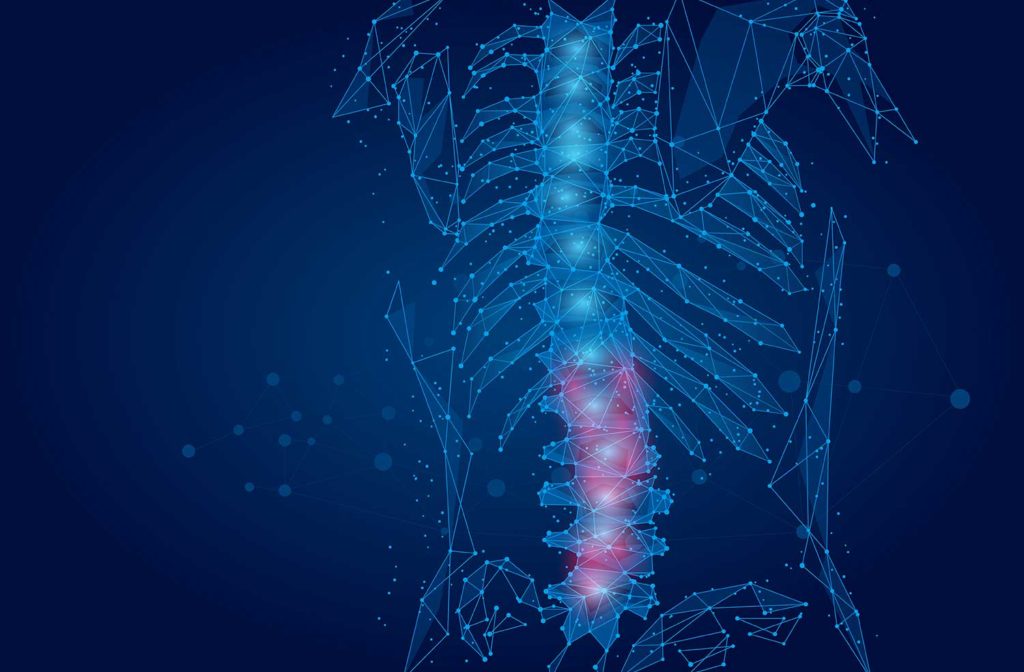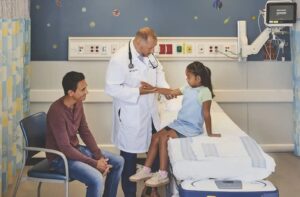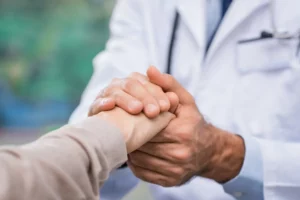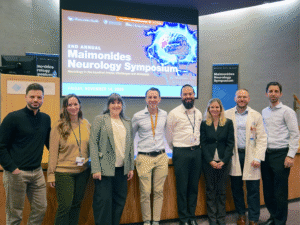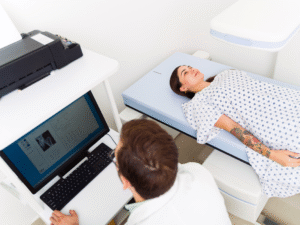Summary
Spinal problems can happen anywhere on the spine and cause great discomfort in your neck, back, or extremities. Join Dr. Afshin Razi and Dr. John Houten as they discuss spinal conditions, when you should see a doctor, and the advanced spinal surgery techniques they use to treat patients.
Listen on Spotify Listen on Apple Podcasts Listen on Google Podcasts
Transcript
Caitlin Whyte: Spinal problems can develop anywhere in the spine and lead to discomfort and pain in the back, as well as other parts of your body, including your neck and legs. Joining us to talk about advanced spinal surgery techniques are Dr. Afshin Razi, the Vice Chair and Residency Program Director of Orthopedics ,and Dr. John Houten, the Director of Spinal Neurosurgery and Neurotrauma Professor of Clinical Neurological Surgery.
This is Maimo Med Talk. I’m your host, Caitlin Whyte. Now, Dr. Razi, what spinal conditions do you treat with surgery at Maimonides?
Afshin Razi, MD: At Maimonides Medical Center, we take care of all kinds of spine problems or neck problems, mid-back and lower back problems. Conditions such as disc herniations, degenerative diseases, things such as what we call lumbar stenosis or cervical stenosis. At Maimonides, we are a level 1 trauma center and, as such, we treat traumatic injuries to the spine as well. We treat scoliosis, both in children and teenagers as well as adults.
Caitlin Whyte: Now, Maimonides is the only hospital in Brooklyn with a spine center that offers minimally invasive spine surgery. Dr. Razi, tell us why this option is so important to have and how it works.
Afshin Razi, MD: Minimally invasive surgery, it’s less invasive. It has a small incisions. The goal is to damage the tissues less, have less postoperative pain and faster recovery. With technologies that we currently have in Maimonides, Dr. Houten will speak about them, are trying to increase safety, decrease intraoperative radiations. It has allowed us to improve surgical accuracy and therefore decrease complications.
Caitlin Whyte: Yes. Dr. Houten, tell us about the robotic options for surgery.
John Houten, MD: Surgery has changed a great deal over the course of my career. The knowledge of the anatomy is the same, but the ability to do things with greater precision, accuracy and safety is considerably improved from what technology allowed four years ago. And the robot is an important advance. With the surgical robot, you can make a preoperative plan that the robot can follow with sub-millimeter precision in a way that is beyond what even the most dexterous surgeon is capable of doing.
Caitlin Whyte: Now, how do these options such as the robotics help both the surgeon and the patient?
John Houten, MD: Well, I think anything that helps the patient is something that helps the doctor. After all, the reason that we try so hard to pursue new technology and to find new ways of doing things is to provide a benefit to our patients in terms of less pain, smaller likelihood of a complication, and to make our patients recover faster and get back to work or their recreation faster.
Caitlin Whyte: Well, that leads me into my next question. Dr. Razi, what does recovery look like after these advanced techniques?
Afshin Razi, MD: So with new technology with robotic and navigation-based surgeries, patients stay in the hospital shorter. There is pain associated with any type of surgery, especially spine surgery, but with a new onset of pain management using less narcotic medications, we are able to get patients out a bit sooner; get them out of the hospital, depending on the surgical intervention, sooner, possibly two to three days if spinal fusions are done. Many patients now with minimally-invasive surgery and small procedures such as diskectomy and even doing small surgery in the neck or cervical spine, they can go home the same day or the next day.
Caitlin Whyte: And Dr. Houten, how would I know as a patient, you know, when to even get a consult for spinal surgery?
John Houten, MD: Most of the spinal problems that I treat are actually not the result of cancer or a trauma, they’re degenerative problems from overgrowth of the bone and cartilage that are an inevitable part of the aging process in the spine. Although spinal pain, such as low back pain or neck pain can be a symptom of degenerative spinal problems, we often get involved when there is something that’s causing compression of the spinal nerve of the spinal cord.
Neurologic symptoms such as numbness in the hands or numbness in the legs or a sense of weakness and inability to walk well are among the most common symptoms of patients who end up needing to see a spinal surgeon. And if someone notices that they are developing a problem where they can’t open a letter, their handwriting is deteriorating, their hands feel numb, that’s something that they have to bring to the attention of their doctor. And hopefully, that will lead to them being referred to a spinal surgeon as soon as it becomes appropriate.
Caitlin Whyte: Great. Well, Dr. Houten, are there any other techniques or information we should touch on today?
John Houten, MD: I think that I should emphasize a little bit more the advances in spinal navigation.
Caitlin Whyte: Please, yes.
John Houten, MD: Because that is a technology that Maimonides is the leader in Brooklyn. We had the first spinal navigation platform installed in 2016. And even today it remains the only navigation platform in Brooklyn. And what navigation means is that the computer is able to use MRI, CAT scan, and other information to create a blueprint that the surgeon can follow during the surgery. The surgeon is no longer concerned that they may not be operating at the precise area that they need to be operating on and the surgeon is always aware of the location of the nerves so that the nerves can be protected. And this technology allows a 3D picture to be available for the surgeon to reference continuously during the surgery. It’s a revolution that I liken to operating with a candle versus operating with a microscope. And I think that these advances are here at Maimonides and I would like to invite our surgeon and medical colleagues in the community to contact us to get more information.
Caitlin Whyte: Beautiful. It’s incredible that technology has come this far. And Dr. Razi, anything else we should add to this conversation on spinal surgery techniques?
Afshin Razi, MD: I think Dr. Houten addressed them all well. We also treat scoliosis in children and teenagers, one of the two centers in Brooklyn that does that. And not only we take care of children and teenagers with scoliosis, we also have a full array of non-operative treatment, where we can offer our patients with non-surgical techniques as well that is beneficial to many patients.
Caitlin Whyte: Well, doctors, I appreciate your time so much. Thank you for this information today. To learn more, please visit maimo.org/spine. That’s M-A-I-M-O dot org slash spine. This has been Maimo Med Talk. I’m your host, Caitlin Whyte. Stay well.

